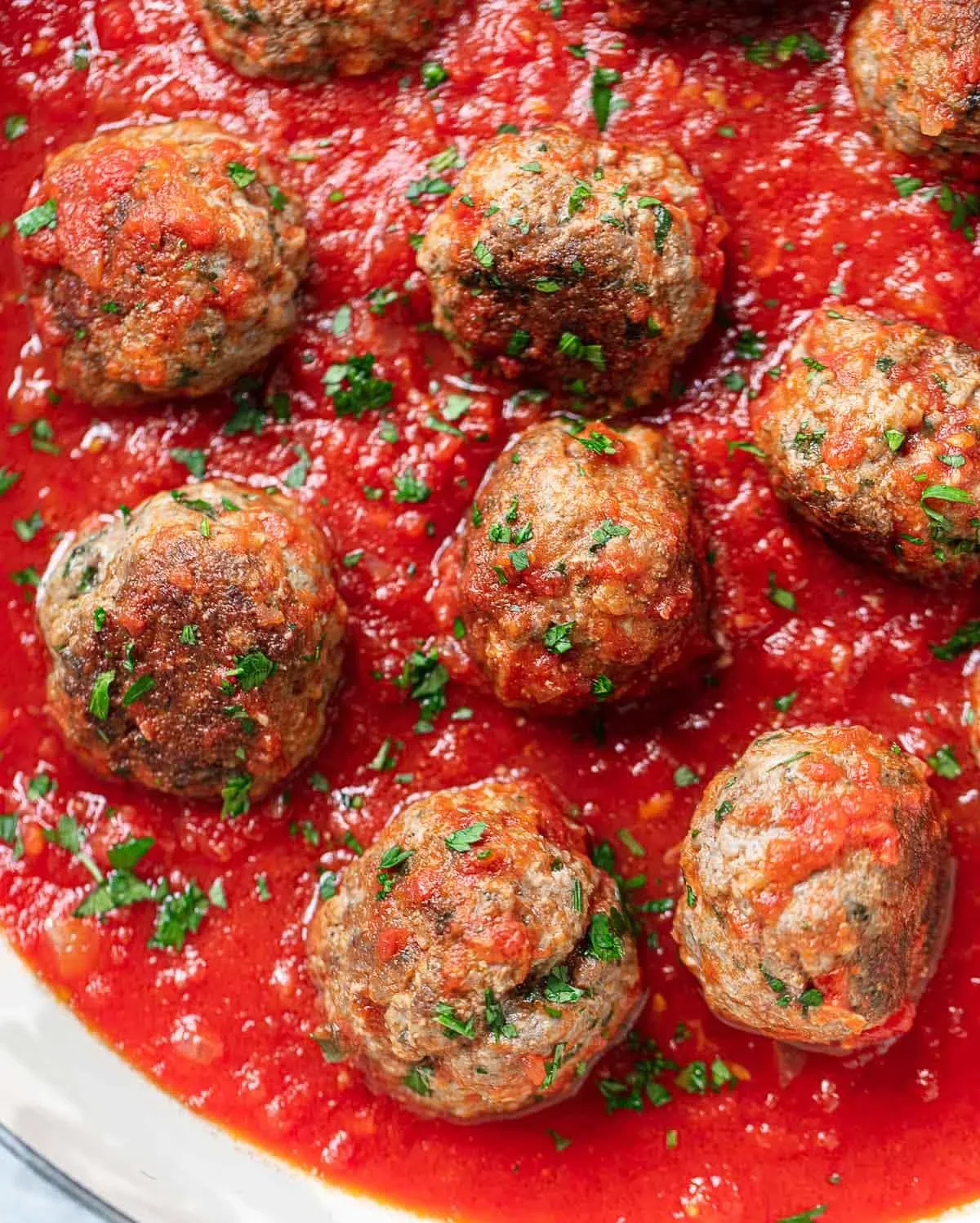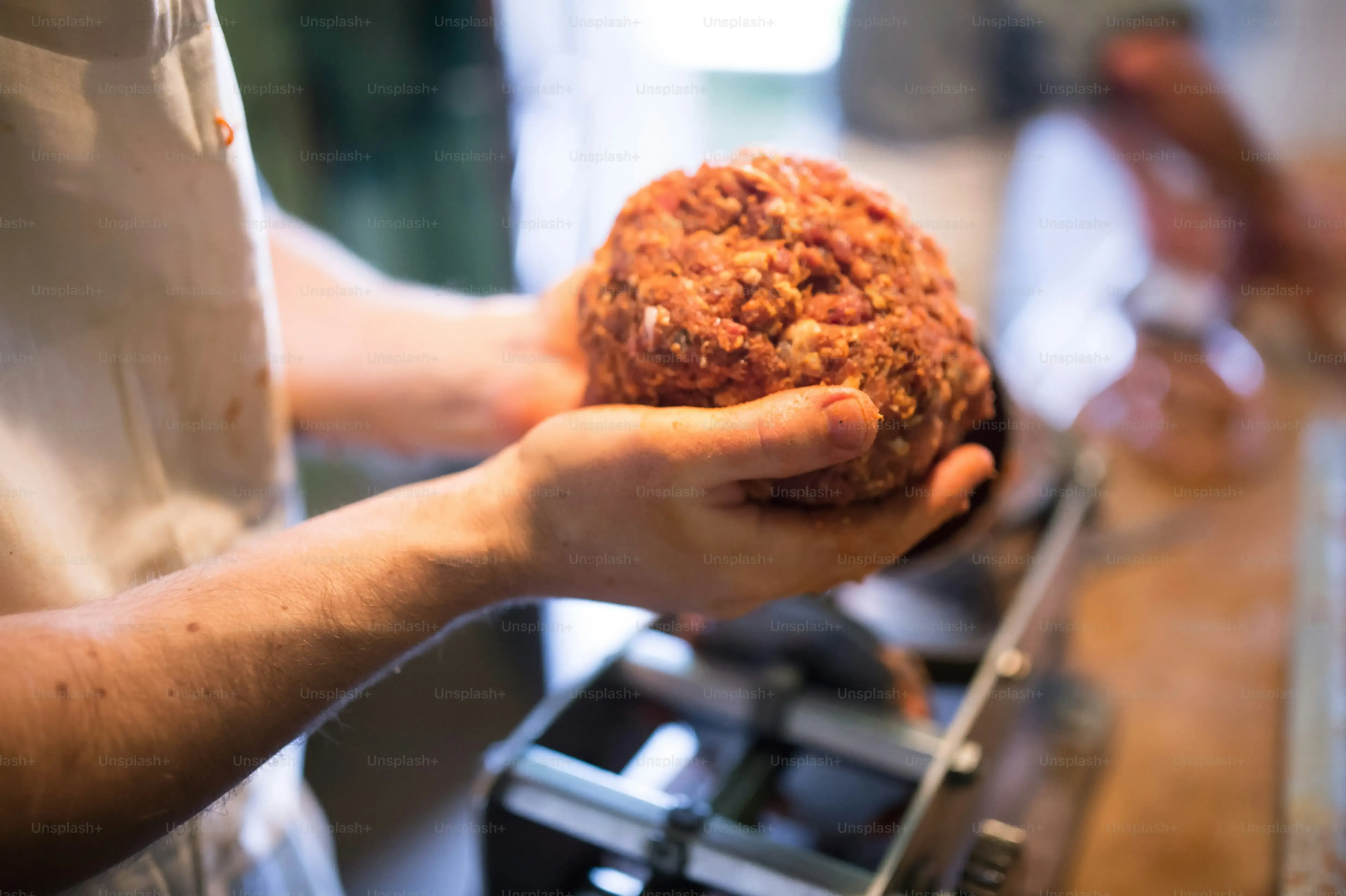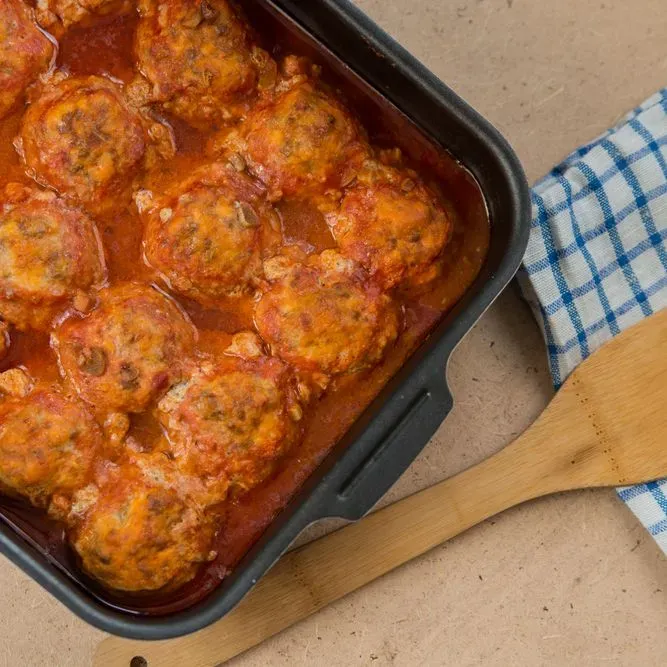Table of Contents
let's talk meatballs. Not the dry, sad little golf balls you sometimes encounter, but the truly magnificent kind – tender, juicy, bursting with flavor. The kind that make you close your eyes and sigh happily. If you've chased that elusive perfect texture, the one that melts in your mouth rather than requiring a serious chew, you know the struggle is real. Getting it right involves more than just mixing meat and rolling balls.
Crafting the Best Italian Meatballs: Why Texture Matters

Crafting the Best Italian Meatballs: Why Texture Matters
The Chewy vs. The Tender Truth
Alright, let's get real. You've probably had them – those meatballs that require serious jaw work. They're dense, maybe a little rubbery, definitely not the melt-in-your-mouth experience you crave. That's a texture fail, plain and simple. The texture of an Italian meatball isn't just some fancy detail; it's fundamental to the whole dish. A truly great meatball should be tender, light, and juicy on the inside, holding its shape just enough to swim in sauce without falling apart completely. It should yield easily when you cut into it, not resist like a stubborn little brick.
Think about it: you're often serving these with pasta, maybe nestled in a sub roll. A tough meatball throws off the whole balance. It's the difference between a truly comforting, delicious meal and something you just... eat. Getting that perfect texture is the first hurdle to clear before you even worry about the sauce or the cheese. It's the foundation.
Building Blocks for Better Bite
So, how do we avoid Meatball Misery and land squarely in Tender Town? It starts with understanding the ingredients and how you treat them. The mix of meats matters – often a blend of beef, pork, and sometimes veal gives you richness and moisture. But the real secret weapon for many classic recipes, including a solid italian meatball recipe epicurious might feature, is the panade. That's the fancy term for soaking breadcrumbs (or sometimes just bread) in milk or water. This starchy paste is crucial because it helps bind the mixture without making it tough, and more importantly, it traps moisture as the meatballs cook. It's like a little sponge, keeping things juicy from the inside out.
Beyond the panade, how you handle the meat mixture is key. Overmixing is the enemy of tenderness. When you work the meat too much, you develop the proteins, leading to that tight, rubbery texture we're trying to avoid. Gentle hands are your best friend here. Mix just until everything is combined, no more. It’s not bread dough; you’re not kneading it.
- Avoid overmixing the meat.
- Use a panade (bread/breadcrumbs soaked in liquid) for moisture.
- Choose a mix of meats for flavor and texture.
- Handle the mixture gently when forming balls.
Inside the Kitchen: An Italian Meatball Recipe Epicurious Style

Inside the Kitchen: An Italian Meatball Recipe Epicurious Style
Alright, so you've got the texture principles down – gentle hands, the magic of the panade. Now, let's step Inside the Kitchen: An Italian Meatball Recipe Epicurious Style means using good stuff and treating it right. We’re talking about a mix of ground beef and pork, maybe even a touch of veal if you're feeling fancy – the blend gives you depth of flavor and fat for juiciness. You'll whisk eggs, soak those breadcrumbs in milk until they're mushy (don't skip this!), mince garlic fine, grate some good Pecorino or Parmesan, and chop fresh parsley. Combine it all in a big bowl, but here’s the critical part: use your hands, lightly. Fold, don't mash. You want everything incorporated, but you don't want to compact the meat and trigger that protein development that leads to toughness. It should feel loose and airy, not like you're making a brick. This gentle touch is the secret handshake of truly tender meatballs before they even hit the heat.
Mastering Tenderness: Tips for Your Italian Meatball Recipe Epicurious Journey

Mastering Tenderness: Tips for Your Italian Meatball Recipe Epicurious Journey
So you've mixed your meat gently and incorporated that magical panade, following the initial steps for a great italian meatball recipe epicurious style. Now comes the heat. While some folks swear by baking or frying the whole way, simmering your meatballs in a good tomato sauce is the real game-changer for tenderness. Think low and slow heat, letting them poach gently in that acidic bath. The sauce prevents them from drying out, and the gentle heat allows them to cook through without seizing up and getting tough. It's not a race; let them hang out in there for at least 30 minutes, ideally longer, soaking up all that deliciousness. This simmering phase is where the magic happens, transforming those carefully shaped balls into tender, flavorful bites.
Beyond the Sauce: Serving and Swapping Your Meatballs

Beyond the Sauce: Serving and Swapping Your Meatballs
More Than Just Spaghetti: Creative Serving Ideas
you've mastered the italian meatball recipe epicurious approved, the texture is spot-on, and they've simmered beautifully in your Sunday sauce. Now what? While draping them over a mountain of spaghetti is a classic for a reason, don't limit yourself. Think beyond the pasta bowl. Meatball subs are a no-brainer – warm, crusty bread, melty cheese, and those tender meatballs? Yes, please. Or slice them up and toss them on a pizza. Cold leftover meatballs, thinly sliced, make a killer addition to a hearty salad or even a simple sandwich. They’re versatile little flavor bombs, ready to elevate more than just your Tuesday night pasta.
Consider serving them as an appetizer. Skewer them with some fresh basil leaves and cherry tomatoes. Or serve them mini-sized (just adjust cooking time) at a party with toothpicks. A good meatball holds its own, even without copious amounts of sauce, making it a fantastic base for other culinary adventures. Don't be afraid to get creative; these aren't fragile artifacts, they're delicious food meant to be enjoyed in many ways.
Swapping and Adapting Your Meatball Masterpiece
Once you nail the basic technique from this italian meatball recipe epicurious journey, you can start playing around. Don't have ground beef and pork? Use all beef, or mix in some ground lamb or even turkey (though turkey needs a bit more fat or a more generous panade to stay moist). Swap the Pecorino for Parmesan, or ditch the cheese entirely if you must (though I wouldn't recommend it). Add a pinch of red pepper flakes for a little heat, or finely chopped onion alongside the garlic for extra flavor complexity. The core principle – gentle mixing, a good panade, and gentle cooking – remains the same, but the flavor profile is yours to tweak.
Maybe you want to make them gluten-free? Use gluten-free breadcrumbs or even cooked rice mashed into a paste for your panade. Dairy allergy? Use water or broth instead of milk for soaking. The beauty of a solid base recipe is that it provides a jumping-off point. You understand *why* the parts work, so you can intelligently swap things out without destroying the fundamental tenderness that makes them great. It’s about informed rebellion in the kitchen.
- Try ground lamb or turkey instead of beef/pork.
- Experiment with different hard cheeses like Parmesan or Grana Padano.
- Add finely minced onion or bell pepper for extra flavor.
- Use gluten-free breadcrumbs or mashed rice for a GF version.
- Swap milk for broth or water if needed.
Leftovers and Freezing: Plan Ahead
Let's be honest, sometimes you make a big batch and you've got leftovers. This is a feature, not a bug. Cooked meatballs store beautifully. Let them cool completely, then stash them in an airtight container in the fridge for 3-4 days. Reheat them gently in sauce on the stovetop or even sliced in a pan. They tend to get even more flavorful as they sit.
Freezing is also your friend. You can freeze them cooked, submerged in sauce, in freezer-safe containers or bags. Thaw overnight in the fridge and reheat. You can also freeze them uncooked. Form the balls, place them on a baking sheet lined with parchment paper, and freeze until solid. Then transfer the frozen balls to a freezer bag. When you're ready to cook, you can often add them directly to simmering sauce; they'll just take a little longer to cook through. Having a stash of ready-to-go meatballs in the freezer feels like money in the bank on a busy weeknight.
Your Meatball Mastery Awaits
So there you have it. Making truly great meatballs isn't about some secret family ingredient passed down through generations (though those stories are nice). It's about understanding the simple mechanics: how the binding works, how gentle handling pays off, and how cooking methods make or break the final texture. Stop settling for dry, dense disappointments. Armed with these techniques, you're ready to tackle that italian meatball recipe Epicurious would nod approvingly at, producing meatballs so tender they'll practically disappear before they hit the sauce. Now go make some meatballs worth talking about.